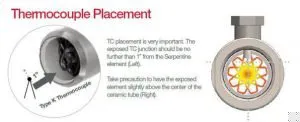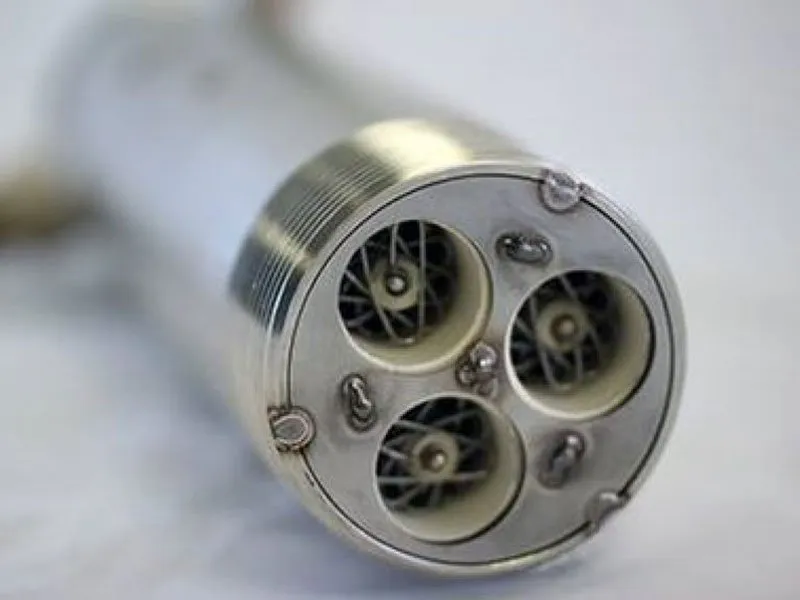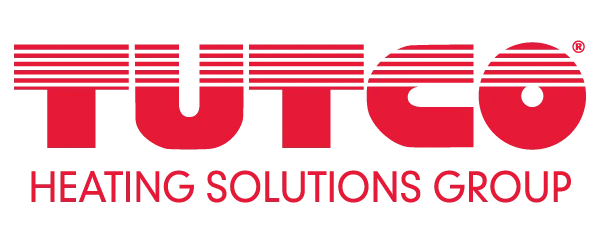Air Heater Set-up and System Design Considerations
You have a need for an air heater component in your process. You have calculated the required power, know the process temperature required for the application, and identified the TUTCO SureHeat air heater product. It all seems like a pretty easy closed-loop system design, until the day you fire up the system and the process temperature isn’t quite where you need it to be. Your first thought is the heater isn’t running hot enough, and you crank up the voltage to “eleven” to compensate. In the process of trying to get the process temperature required, the heater element suddenly fails. What happened? What’s wrong with the heater? My temperature controller was only reading 700°C, why did it fail? We hear these questions often and the answer can sometimes be as simple as the placement of the thermocouple or the speed of the process.

To resolve the issue, its important to fully comprehend just how fast our TUTCO SureHeat Serpentine elements can heat up. The Serpentine element coil passes current quickly and the result, just like a resistor, is heat. The fast response time is a feature that improves process speeds but if not fully understood and controlled, it can heat up too fast resulting in overshoot. Closed-loop systems designed to control air heaters must be set up to keep a the heating coil temperature within its safe range. The process temperature can be very different from the actual element temperature. The control components need to be fast enough to measure and quickly make adjustments to regulate the voltage to the heater. Adjustments should be incremental, quick, and regulated. Moderate incremental changes keep the heating coil temperature stable. If properly set up, the heater temperature should remain within +/-2°F.
If you are only using only one thermocouple (TC) in your closed-loop system, its placement should be 1″ away from exit of the heating element in the air flow. Type K exposed thermocouples work best. They are faster and more accurate. Placing your TC, further down the process line will not accurately reflect the heater element temperature. Temperature losses through a section of metal pipe can be quite dramatic.
We constantly see system designs where thermodynamic considerations aren’t taken into account. The cooler materials act as a heat sink as the air passes through and wick away heat. Over a period of time, and if properly insulated, the process temperature will increase as the materials surrounded increase in temperature. The simplest example is a pot of water on a stove. If hungry, you will want to get it boiling as fast as possible. The burner is set to high. The pot actually heats up rather quickly causing the water to boil when it reaches temperature. It’s ready pretty quickly but the handle on the pot while getting warmer, isn’t hot enough to burn you. If you forget about the boiling water, over time, the handle will get hotter. It just takes a greater amount of time to get to a temperature that is uncomfortable or too hot to the touch.
Things to remember to avoid overshoot:
- air should be on and passing through the heater before applying power
- heating elements are like power resistors
- measured process temperature is not the element temperature
- keep the heater as close to the process point as possible
- place the TC close to the exit end of the heater in the air flow
- use a ramp rate to slow and control the heater start up temperature
- allow time to heat up the materials surrounding the process
- insulate the materials to hold temperatures and keep them from rapidly cooling
- chose control components that are appropriate for the heater specifications
- regulate the voltage to the heater through smaller incremental changes
If you have specific questions about set-up, component choice, or installation. Our applications engineers would be happy to help. Click here to contact our applications engineers.

